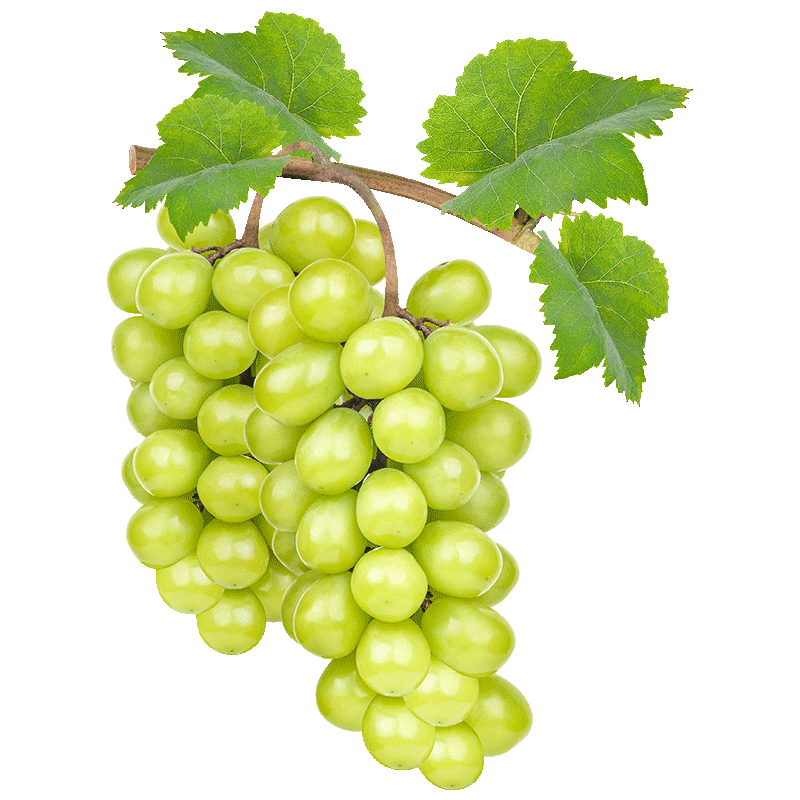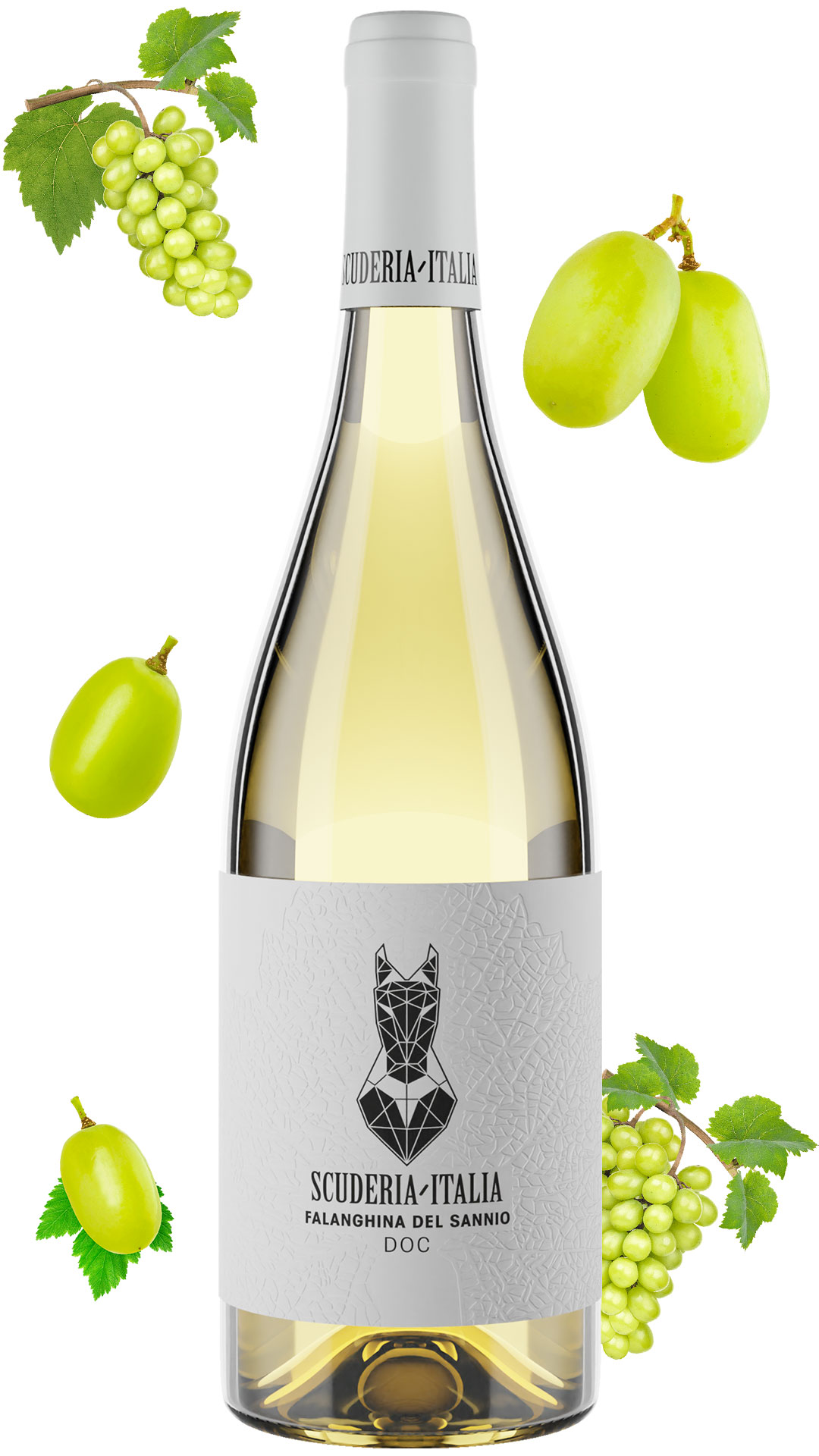
FALANGHINA
del Sannio Doc

We are in Campania, more precisely in Casalduni, in the province of Benevento. In short, we are in the pulsating heart of Sannio, the wine-producing powerhouse of the Campania region. Here, our organic Falanghina del Sannio wine is born, known for its irresistible freshness and pleasantly bitter finish.
In our Falanghina, there’s a rich variety of aromas that are best appreciated from September following the harvest year.
Fresh and fruity, it expresses notes of citrus, tropical fruits, peach, banana, and white flowers.
With its straw yellow color, this wine is so refreshing that it’s perfect to enjoy even during the warm Campanian afternoons. It pairs excellently with the typical fish dishes of Campanian cuisine.
The vineyards are located at around 350 meters above sea level. Cultivation, pruning, and harvest are strictly done by hand: there’s nothing mechanized, as the characteristics of the terrain don’t allow for it.
A grape variety on
“Own Roots”
Not everyone is aware that in Campania, some grapevines survived the phylloxera invasion of the late 1800s. Since then, wines have been produced by grafting European vines onto American rootstocks. However, some grape varieties have shown resistance to this parasite and do not require grafting.
As a result, they are referred to as “on own roots” or “own-rooted.” Indeed, a remarkable 30% of the grapevines from which this Falanghina del Sannio originates are on their own roots. This fact signifies more than just the vineyard’s antiquity; it speaks of the pure magic of ancient vines, touched and cared for by four generations. A territory that has been the home of hundreds of families and that continues to thrive today, giving life to new vineyards, dreams, and passions.










A grape variety on
“Own Roots”
Not everyone is aware that in Campania, some grapevines survived the phylloxera invasion of the late 1800s. Since then, wines have been produced by grafting European vines onto American rootstocks. However, some grape varieties have shown resistance to this parasite and do not require grafting.
As a result, they are referred to as “on own roots” or “own-rooted.” Indeed, a remarkable 30% of the grapevines from which this Falanghina del Sannio originates are on their own roots. This fact signifies more than just the vineyard’s antiquity; it speaks of the pure magic of ancient vines, touched and cared for by four generations. A territory that has been the home of hundreds of families and that continues to thrive today, giving life to new vineyards, dreams, and passions.

Technical Sheet
WINE
- DENOMINATION: Sannio
- DESIGNATION: Still White Wine
- CLASS OF MEMBERSHIP: Denominazione di Origine Controllata (DOC)
- CERTIFICATION: Organic Wine
- PRODUCTION AREA: Carinaro (CE) – Campania
- VINTAGE YEAR: 2022
- GRAPE VARIETY: 100% Falanghina
- ALCOHOL BY VOLUME: 13.5%
- RESIDUAL SUGAR: 0.6 g/l
- TOTAL ACIDITY: 5.85 g/l
- VOLATILE ACIDITY: 0.3 g/l
- PH: 3,1
- DRY EXTRACT: 22.6 g/l
- SULFUR DIOXIDE: 125 mg/l
- BOTTLES PRODUCED: 5000
WINEYARDS
- AGRONOMIST: Fabio Mecca
- VINEYARD LOCATION: Casalduni – Benevento
- AVERAGE VINEYARD ALTITUDE: 350 meters above sea level
- SOIL TYPE: Medium Loam
- YIELD PER HECTARE: 90 quintals
- PLANT DENSITY: 3500 plants per hectare
- TRAINING SYSTEM: Guyot
- VINE AGE: 30% Free-standing vines: 70 years old – 70% Grafted vines: 25 years old
- HARVEST PERIOD: Late September 2022
IN THE CELLAR
- OENOLOGIST: Fabio Mecca
- WINEMAKING TECHNIQUE: Classic in white, in stainless steel tanks at controlled temperature, aging in stainless steel tanks for approximately 7 months, bottle aging for at least 3 months
- TYPE OF FERMENTATION TANKS: Stainless Steel
- FERMENTATION TEMPERATURE: 13°C
- FERMENTATION DURATION: 30 days
- MALOLACTIC FERMENTATION: No
- AGING IN WOOD: No
- AGING IN STAINLESS STEEL: 7 months
- BOTTLING DATE: June 23, 2023
TASTING
- AGING POTENTIAL: Over 5 years
- BEST TIME FOR TASTING: Ready for Tasting
- SERVING TEMPERATURE: 10-12°C
- BOTTLE OPENING: A few minutes before tasting
- DECANTATION: No
- SOMMELIER’S NOTES:
- COLOR: Straw yellow with greenish reflections
- AROMA: Fresh and fruity, with notes of citrus, tropical fruits, peach, banana, and white flowers.
- TASTE: Dry, with great freshness and persistence, with a pleasant bitter aftertaste.
- FOOD PARING: Seafood soups and shellfish, first courses with seafood.
AWARDS AND SCORES
- LUCA MARONI – THE BEST WINES OF ITALY 2024: 91/99 | Discover the certificate
- ORGANIC guide 2024: 5 Leaves (out of 5) | Discover the certificate
- VinoWay 2024: 89/100 – Silver | Discover the certificate
- Luca Gardini – The Wine Killer: 91/100 | Discover the certificate
- Wine Enthusiast: 90/100 (Excellent) | Discover the certificate
ENVIRONMENTAL LABELING
- CATEGORY: Bottle
- MATERIAL TYPE: Clear Glass
- WASTE DESTINATION: Glass collection
- ENVIRONMENTAL CODE: GL 70
- CATEGORY: Cork
- MATERIAL TYPE: Plant-based biopolymers
- WASTE DESTINATION: Plastic collection
- ENVIRONMENTAL CODE: LDPE 4
- CATEGORY: Capsule
- MATERIAL TYPE: PVC Shrink Capsule
- WASTE DESTINATION: Plastic collection
- ENVIRONMENTAL CODE: C/PVC 90
- CATEGORY: Box
- MATERIAL TYPE: Paper
- WASTE DESTINATION: Paper collection
- ENVIRONMENTAL CODE: PAP 20
Contact us
Fill out the form to request more information.
